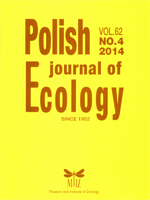A set of medium-scale historical maps was used to reconstruct changes in spatial patterns of forest area during the last 220 years in an agricultural matrix of northeastern Europe (Zemgale region, Latvia). Changes in total forest area by soils were determined, as well as the time period of continuous forest cover. Proportion of protected area for each soil trophic group was also calculated. Patterns of recent forest development differed between soil trophic groups. Afforestation occurred mainly on wet and poor soils in the 19th and 20th centuries, while the proportion of woodland area on fertile soils typical for nemoral forests was fairly stable. Only 1% of the fertile soil area has been covered by continuous forest for more than 220 years, and only 11% of them are protected. Nemoral deciduous forests cover only 15% of their potential natural vegetation area of forested eutrophic soils. Therefore, in regard to habitat protection that is representative of natural distribution of ecosystems, priority in conservation should be given to forests on fertile soils.
How to translate text using browser tools
1 December 2014
Past and Contemporary Changes in Forest Cover and Forest Continuity in Relation to Soils (Southern Latvia)
Anda Fescenko,
Olgerts Nikodemus,
Guntis Brūmelis
ACCESS THE FULL ARTICLE

Polish Journal of Ecology
Vol. 62 • No. 4
December 2014
Vol. 62 • No. 4
December 2014
afforestation
ancient forest
recent forest
soil trophic groups




